Q
Does the Volvo XC90 recharge while driving?
As a plug - in hybrid electric vehicle (PHEV), the Volvo XC90 Recharge does charge its battery partially through the kinetic energy recovery system during driving, but it mainly relies on external power sources to maintain the battery charge. When the vehicle decelerates or brakes, the system converts part of the kinetic energy into electrical energy and stores it in the battery. This design helps improve energy efficiency and extend the pure - electric driving range. However, the efficiency of this charging method is limited and cannot fully replace plug - in charging. Therefore, it is recommended that car owners regularly use charging piles to fully charge the battery for optimal performance.
For users in Malaysia, the hybrid system of the XC90 Recharge is well - suited to the local traffic conditions. It can reduce fuel consumption and take advantage of the pure - electric mode in congested roads. It should be noted that although the kinetic energy recovery technology is quite mature, car owners still need to plan their charging schedules reasonably to ensure that the vehicle is always in the best condition. Volvo's hybrid system is well - known for its reliability and efficiency, providing a practical solution for environmentally - friendly travel.
Special Disclaimer: This content is published by users and does not represent the views or position of PCauto.
Related Q&A
Q
How expensive is it to maintain a Volvo XC90?
In Malaysia, the maintenance costs for the Volvo XC90 sit in the upper-middle range for luxury SUVs. Regular services like oil changes and filter replacements typically run between RM800 to RM1,200 per visit, depending on the type of oil used and the specific pricing at each authorized service center. Major services, which might include brake pad replacements and transmission fluid changes, can set you back anywhere from RM3,000 to RM5,000. It’s definitely advisable for owners to stick to the official maintenance schedule to keep the vehicle performing at its best and to avoid even heftier repair bills down the line.
As a luxury SUV that prioritizes safety and technology, the XC90 does come with relatively higher maintenance costs. However, Volvo’s reputation for durability and high-quality components means lower long-term failure rates, which helps offset those unexpected repair expenses. Malaysia’s authorized Volvo service centers offer transparent maintenance packages, so owners can get a clear idea of costs upfront and plan their budgets accordingly. It’s also worth considering an extended factory warranty plan to cover potential high-cost repairs later in the vehicle’s life.
When stacked against other luxury brands, Volvo’s maintenance fees are reasonably competitive. And let’s not forget—its top-tier safety tech and eco-friendly interior materials are big reasons many owners are happy to invest that little bit extra.
Q
What is the life expectancy of a XC90?
The Volvo XC90, as a luxury SUV, typically enjoys a service life of 15 to 20 years in the Malaysian market, though this can vary depending on maintenance upkeep, driving habits, and local climate conditions. Sticking to regular oil changes, transmission fluid replacements, timing belt services, and strictly following the manufacturer's recommended maintenance schedule can significantly extend its lifespan. Malaysia's hot and humid environment can accelerate the aging of rubber components and electronic parts, so it's advisable to regularly inspect chassis bushings, weatherstripping, and wiring harnesses. The Drive-E engine under the hood has a solid reputation for reliability, but using the correct grade of fully synthetic oil is a must to ensure it performs at its best. For those looking at a used XC90, pay close attention to the air suspension (if equipped) and the turbocharging system – these are common high-maintenance areas on premium models. It's worth noting that Volvo's safety tech, like the City Safety system, tends to hold up well even in high-mileage vehicles, which is a core strength of the brand. With proper care, the XC90 is more than capable of serving Malaysian families for the long haul. Its durability is on par with German rivals in the same class, but it often comes with a more attractive maintenance cost advantage.
Q
Which Volvo XC90 to avoid?
Honestly, every version of the Volvo XC90 brings its own unique strengths and character—there’s really no model you should outright avoid. But if you’ve got specific needs or priorities, there are a few things worth keeping in mind. Let’s break it down. If you’re working with a tight budget but still want solid features, the 2020-2022 models might be tricky since some of those are no longer in production. That could mean higher costs or more hassle down the line when it comes to maintenance and finding replacement parts.
Now, if value for money is your main goal, the 2025 Volvo XC90 Ultra T8, priced at RM 434,888, sits on the higher end. If you don’t really need much all-electric range, you won’t get to fully leverage its plug-in hybrid benefits, making it a bit of a stretch cost-wise. And let’s say you’re not overly fussed about the latest power upgrades or tech tweaks—then the incremental improvements in newer models might not feel worth the extra cash. In that case, going for an older model could save you a pretty penny upfront.
Q
Is the XC90 a large SUV?
Yeah, the Volvo XC90 is definitely a full-size SUV. It stretches close to 5 meters in length and has a wheelbase over 2.9 meters, offering a three-row, seven-seat layout. The space is roomy and comfortable, making it a solid choice for Malaysian families or anyone needing to haul multiple passengers. Over here in Malaysia, the XC90 has built up a good following thanks to its Scandinavian luxury design, cutting-edge safety tech, and strong performance. The T8 plug-in hybrid, in particular, strikes a nice balance between power and eco-friendliness, which aligns perfectly with what local folks expect from a premium SUV. Now, full-size SUVs generally give you better ground clearance and cargo capacity, but that larger footprint can feel a bit cumbersome when navigating the tighter streets of cities like Kuala Lumpur. So, it's smart to really think about your daily driving needs before taking the plunge. Rivals in this segment include German heavyweights like the BMW X7 and Mercedes-Benz GLS – definitely worth checking out how they stack up in terms of space, features, and overall driving feel before making a decision. Given Malaysia's hot and rainy climate, the XC90's panoramic sunroof and four-zone climate control are nice touches that boost comfort. And of course, Volvo's City Safety system adds an extra layer of security when dealing with tricky traffic situations.
Q
What is the best year of XC90 to buy?
When shopping for a Volvo XC90 in Malaysia, the second-generation models from 2016 onwards are your best bet – especially the post-2018 facelift versions. These come with the more refined Drive-E turbo engines (T5/T6/T8), an upgraded Sensus infotainment system, and revised suspension tuning that better suits local road conditions. If your budget stretches further, the 2020+ models step up with standard Pilot Assist semi-autonomous driving and the CleanZone air purification system, both of which are surprisingly handy in our tropical climate.
A quick heads-up: early 2016-2017 builds had occasional electronic system lag issues, so we’d strongly recommend going through the Volvo Selekt certified pre-owned program to get that factory warranty peace of mind. What really sets the XC90 apart in its class is the standard 7-seat layout and that typically Volvo超高安全配置 – including the rollover protection system. That said, it’s worth cross-shopping against the Lexus RX or BMW X5 from the same model years. European cars do tend to have slightly higher maintenance costs here compared to Japanese rivals, though Volvo’s factory 5-year free servicing plan helps take the edge off that difference.
Q
What is the price of Volvo XC90 in India?
The Volvo XC90 is priced roughly between 8 million to 12 million Indian Rupees in India (that's around 440,000 to 660,000 Malaysian Ringgit, though exchange rates can fluctuate). The exact figure hinges on the specific trim level, regional taxes, and any dealer promotions on offer. As a luxury SUV, the XC90 has earned global acclaim for its Scandinavian design ethos, cutting-edge safety tech, and plug-in hybrid options, and in India, it's similarly targeting the premium buyer demographic.
For our Malaysian readers, while local pricing will differ from India's, you can get a sense of its positioning. The XC90 is primarily sold in Malaysia via imported channels, which means its price tag tends to be on the higher side due to tariffs and import duties. Key highlights of the vehicle include those distinctive Thor's Hammer LED headlights, the intuitive Sensus infotainment system, and the comprehensive City Safety suite. Power-wise, there's a range to choose from, including T5, T6, and the T8 plug-in hybrid – the latter striking a nice balance between performance and eco-friendliness.
If you're considering getting behind the wheel of one, we'd recommend checking quotes from authorized Volvo dealers in Malaysia. Also, keep an eye out for the warranty packages or financing deals that Volvo Asia Pacific frequently rolls out – they can sweeten the deal.
Q
Is it worth buying a Volvo XC90?
Whether a Volvo XC90 is worth buying in Malaysia really comes down to your needs and budget. This SUV is known for its top-notch safety, plush interior, and that distinct Scandinavian design flair – it’s a solid pick if you’re a family-focused driver who doesn’t want to compromise on quality.
The XC90 comes loaded with tech right out of the box, like the City Safety system and Pilot Assist semi-autonomous driving features. Power-wise, you’ve got options: T5, T6, and the T8 plug-in hybrid. The T8, in particular, stands out for fuel efficiency, which is a big plus given Malaysia’s not-so-friendly fuel prices.
Inside, space is generous, and the three-row seating setup is practical – though let’s be real, that third row is better suited for kids or short hops rather than full-grown adults on long drives.
Now, the flip side: Volvo’s after-sales network in Malaysia isn’t as extensive as the German or Japanese brands. Maintenance and repair costs can run higher, and when it comes time to sell, it won’t hold its value as well as a Lexus RX or BMW X5.
If you’re drawn to unique design, prioritize cutting-edge safety, and can swing the higher ownership costs, the XC90 is a luxury SUV that deserves a spot on your shortlist. But don’t stop there – the Audi Q7 and Mercedes GLE are strong contenders too, each with their own strengths. At the end of the day, take ’em for a test drive and go with what best fits your real-world needs.
Q
How to check the oil level on a 2018 Volvo XC90?
To check the engine oil level of the 2018 Volvo XC90, first make sure the vehicle is parked on a level surface and turn off the engine for at least 10 minutes to allow the oil to drain back into the oil pan. Then open the hood and find the oil dipstick, usually a yellow or orange pull - ring. Pull it out, wipe it clean with a clean cloth, re - insert it, and then pull it out again. Check if the oil mark is between the "MIN" and "MAX" markings on the dipstick. If it's below the "MIN" mark, you need to add 0W - 20 engine oil that meets Volvo's certification.
Given the hot and humid climate in Malaysia, it's recommended to regularly check the condition of the engine oil, as high temperatures can accelerate oil oxidation. Also, be aware of the electronic oil gauge system equipped in the Volvo XC90. You can view the digital oil level display through the vehicle information menu on the central control screen, which is more accurate than the traditional oil dipstick.
During daily maintenance, besides paying attention to the oil level, also note the color of the oil. If you find it has turned black or contains metal debris, replace it immediately. It's advisable to follow the manufacturer's maintenance cycle of every 10,000 kilometers or 12 months. Using the synthetic oil recommended by the factory can better protect the turbocharged engine and maintain good lubrication performance even in Malaysia's mountainous terrain.
Q
How to check tire pressure on 2018 Volvo XC90?
To check the tire pressure of the 2018 Volvo XC90, first make sure the tires are cold (the vehicle has been parked for at least 3 hours or driven for no more than 2 kilometers). Then, use a digital tire pressure gauge or the tire pressure detection equipment at a gas station/repair shop. Unscrew the tire valve cap, align the tire pressure gauge with the valve stem and press it firmly, and read the displayed tire pressure value. Compare it with the vehicle's recommended value (usually indicated on the driver's side door frame label, inside the fuel tank cap, or in the user manual. The standard tire pressure for the XC90 is approximately 230 - 250 kPa). If the tire pressure is insufficient, use an air pump to inflate the tires to the recommended value. If it's too high, press the center of the valve stem to release air. In the hot climate of Malaysia, the tire pressure may rise slightly due to high temperatures, but there's no need to deliberately release air because the vehicle's recommended value already takes temperature changes into account. Checking the tire pressure once a month regularly can ensure driving safety and fuel efficiency. At the same time, it's recommended to check the spare tire pressure (if equipped), and note that abnormal tire pressure may cause uneven tire wear or a decline in handling performance. If the tire pressure warning light appears on the dashboard, it needs to be dealt with immediately.
Q
What is the fuel economy of a 2018 Volvo XC90?
The 2018 Volvo XC90 comes in versions such as the T5 and the T8 Twin Engine Inscription. The official combined fuel consumption of the T5 version is 7.9L per 100km, while that of the T8 Twin Engine Inscription version is 2.1L per 100km. However, the actual fuel economy can be affected by multiple factors.
In terms of driving habits, aggressive driving styles like rapid acceleration and sudden braking can increase fuel consumption. On the contrary, good habits such as smooth starts and constant - speed driving can help reduce fuel consumption. Regarding road conditions, in congested urban areas where vehicles frequently start and stop, fuel consumption will go up. On the other hand, on highways where vehicles can maintain a stable high - speed, fuel consumption is usually lower.
If the vehicle is overloaded, for example, when it is often full of passengers or carrying a large amount of cargo, the engine has to output more power, which also leads to an increase in fuel consumption. In addition, good vehicle maintenance, such as regular servicing and maintaining proper tire pressure, is beneficial for keeping fuel consumption low.
Latest Q&A
Q
How much is a new Toyota Yaris 2025?
The all-new 2025 Toyota Yaris is expected to hit Malaysian showrooms with a price tag ranging from RM 70,000 to RM 90,000, though the final figure will depend on the trim level and any optional extras you tick. The base model will likely stick with the tried-and-tested 1.5L naturally aspirated engine paired with a CVT gearbox, while higher-spec variants should come loaded with more safety tech, including the Toyota Safety Sense suite – think pre-collision warning and lane-keeping assist, for starters.
In the local B-segment hatchback scene, the Yaris has always been a hit thanks to its fuel efficiency, reliability, and nimble handling. What sets it apart from rivals like the Honda City Hatchback or Nissan Almera? A sportier exterior design that gives it a bit more attitude.
But hey, don’t forget to factor in extra costs like road tax, insurance, and registration fees when budgeting – those can add up. Your best bet? Swing by an authorized Toyota dealer to check out the latest promos. Toyota Malaysia often runs deals like low-interest financing or free service packages, which are definitely worth asking about.
Oh, and keep an eye out for the 2025 model’s upgraded infotainment system – rumor has it wireless Apple CarPlay and Android Auto might finally make the cut, making your daily drive that much more convenient.
Q
How much horsepower does a 2025 Toyota Yaris have?
Toyota hasn't officially spilled the beans on the exact horsepower figures for the 2025 Yaris in Malaysia just yet. But if we take a peek at the current model's powertrain setup, it's a safe bet we'll still see the 1.5-liter four-cylinder naturally aspirated engine making a return. We're probably looking at around 106 to 110 horsepower, paired with that trusty CVT gearbox – perfect for zipping around the city and keeping fuel costs in check.
Now, if they decide to bring in the GR Sport performance trim, that's where things could get interesting. Word on the street is it might pack a punch with a 1.6-liter turbocharged engine, potentially cranking out over 200 horsepower. But hey, don't hold me to that until Toyota Malaysia makes it official, right?
Here's the thing though – horsepower isn't the be-all and end-all when it comes to a car's performance. Torque delivery, how light the body is (thanks to the TNGA platform the Yaris uses), and how efficient the transmission is all play a huge role too.
So, for Malaysian buyers, it really boils down to what you need. If you're mostly using it for daily commuting, the standard Yaris with its focus on fuel efficiency is going to be the practical choice. But if you crave a bit more driving excitement, keep an eye out for any news on that sportier variant they might bring in later.
Also, let's not forget Malaysia's hot and humid climate, which can really test an engine's cooling system and a gearbox's durability. Regular maintenance is key to keeping that powertrain running in tip-top shape.
Q
What kind of engine is in the Toyota Yaris GR 2025?
Under the hood of the 2025 Toyota Yaris GR lies a 1.6-liter three-cylinder turbocharged engine, a powerplant renowned for its impressive output and efficiency. Cranking out a solid 257 horsepower and a healthy 360 Nm of torque, it pairs with a slick 6-speed manual gearbox or an optional automatic, delivering a genuinely engaging driving experience that enthusiasts crave.
This engine isn't just about raw power, though. It's packed with advanced turbocharging tech and direct injection, which not only boosts performance but also keeps fuel economy in check – a real plus for Malaysia's diverse driving conditions. Whether you're navigating busy city streets during the daily commute or carving up twisty mountain roads on the weekends, this little hot hatch handles it all with confidence.
And let's not forget the GR-Four all-wheel-drive system. It's a game-changer, significantly upping the car's grip and stability, especially when the rain starts to pour and the roads get slippery. For Malaysian petrolheads, the Yaris GR isn't just another peppy hatchback; it's a labor of love from Toyota's Gazoo Racing division, a testament to the brand's deep-seated expertise in crafting thrilling, sporty machines.
Sure, there are other players in the hot hatch segment, each with its own set of strengths. But if you're after a package that balances performance, everyday usability, and Toyota's legendary reliability, the Yaris GR is definitely one that should be high on your shortlist.
Q
Does the 2025 BMW X3 require premium gas?
The 2025 BMW X3 is officially recommended to use RON 95 or higher gasoline in the Malaysian market. However, for optimal performance, it's advisable to go with RON 97 or higher premium fuel. Why? Because high-octane gasoline better suits the high compression ratio design of its turbocharged engine, reducing the risk of knocking and optimizing power delivery.
In Malaysia, gasoline grades are RON 95 and RON 97, with RON 97 being the premium option. While it does cost a bit more at the pump, it offers better combustion efficiency. Sticking with it long-term can help minimize carbon buildup and potentially extend the engine's lifespan.
Now, here's the thing: if you have to temporarily fill up with RON 95, it won't immediately damage the engine. Modern cars, including this Bimmer, are equipped with knock sensors that can automatically adjust ignition timing. But, consistently using lower-octane fuel might lead to reduced performance and increased fuel consumption over time.
For a brand like BMW, which prides itself on driving dynamics, following the manufacturer's fuel recommendations is key to keeping the vehicle performing at its peak. The good news is, RON 97 is widely available at most Malaysian petrol stations, so owners shouldn't have any trouble finding it when they need to refuel.
Q
What colors are the BMW 3 Series 2025?
The 2025 BMW 3 Series has entered the Malaysian market with a solid color palette to suit different tastes. There are timeless classic colors: Black Sapphire metallic, Alpine White solid, and Brooklyn Grey metallic. For those wanting a bit more flair, there's the eye-catching Arctic Race Blue metallic. And if you're really looking to stand out, keep an eye out for potential special finishes like matte or exclusive metallic options, BMW usually has something extra for those who want to personalize their ride.
Now, when picking your 3 Series hue here in Malaysia, personal preference obviously leads the way, but our local climate is worth a thought too. Lighter shades tend to be more practical in the heat – they are less likely to show dust and help reflect some of that harsh sunlight, which can make a difference when you step into a parked car. Darker colors, though, exude that classic, premium dignified and luxurious vibe that BMW does so well.
One thing BMW doesn't skimp on is paint quality. They use high-tech stuff like multi-layer application and nano-coatings. It's not just about making the car look stunning – these paints are tough, too. Expect good scratch resistance and corrosion protection, which is pretty handy given our frequent rain and humid conditions.
If you're still on the fence about which color to go for, it's advisable to head down to your local authorized BMW dealership. Checking out the actual color swatches or, even better, seeing the colors on a real car under different lighting is the way to go. Trust me, colors can look surprisingly different in the showroom versus outside in the sun.
View MoreRelated News
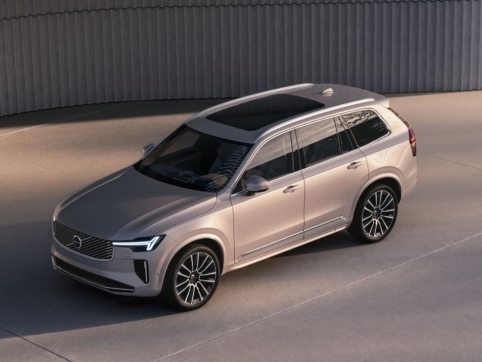
Volvo XC90 Facelift Launched in Malaysia with Exterior and Interior Changes
JohnApr 11, 2025
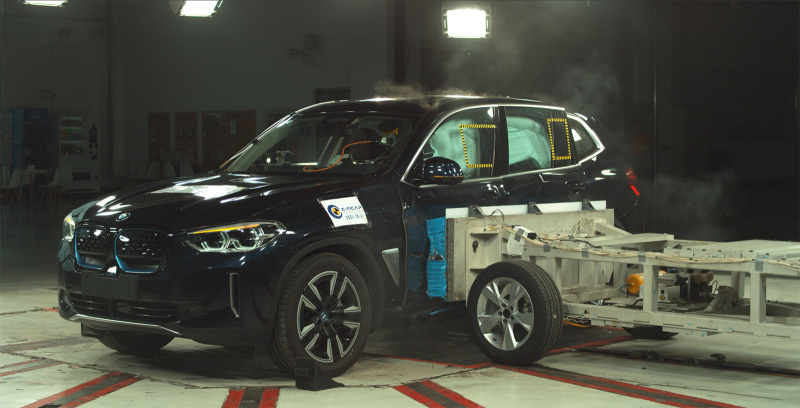
Structure, Materials, Airbags, What are the main evaluation criteria for automotive safety performance?
WilliamSep 14, 2024
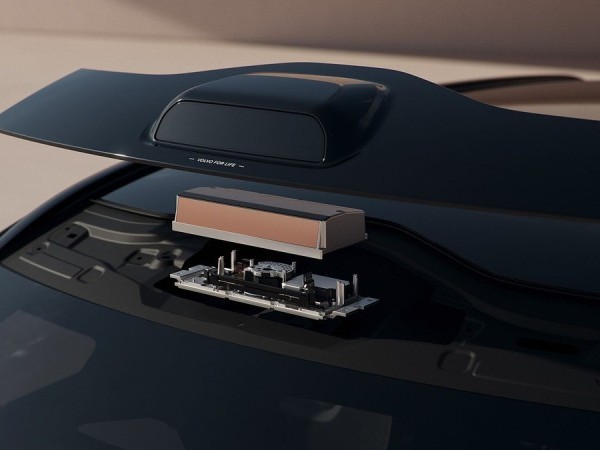
Warning: Vehicle LiDAR Can Damage Your Phone Camera!
AshleyMay 19, 2025

Well-Planned Space: The Exceptional Practicality of the Volvo XC60
Kevin WongMay 16, 2025
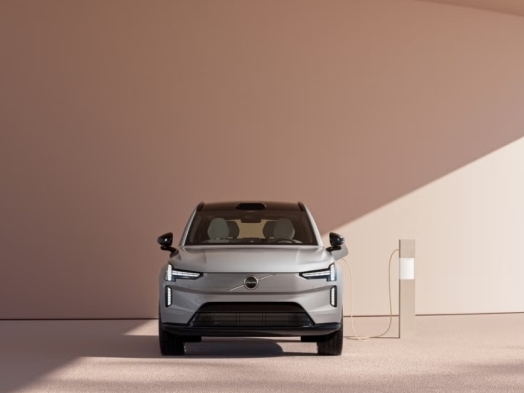
Volvo EX90 Electric SUV Now Available – RM 442,888
LienApr 11, 2025
View More









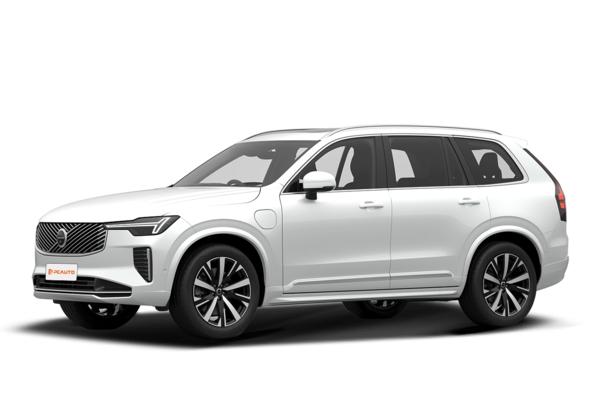





Pros
Cons